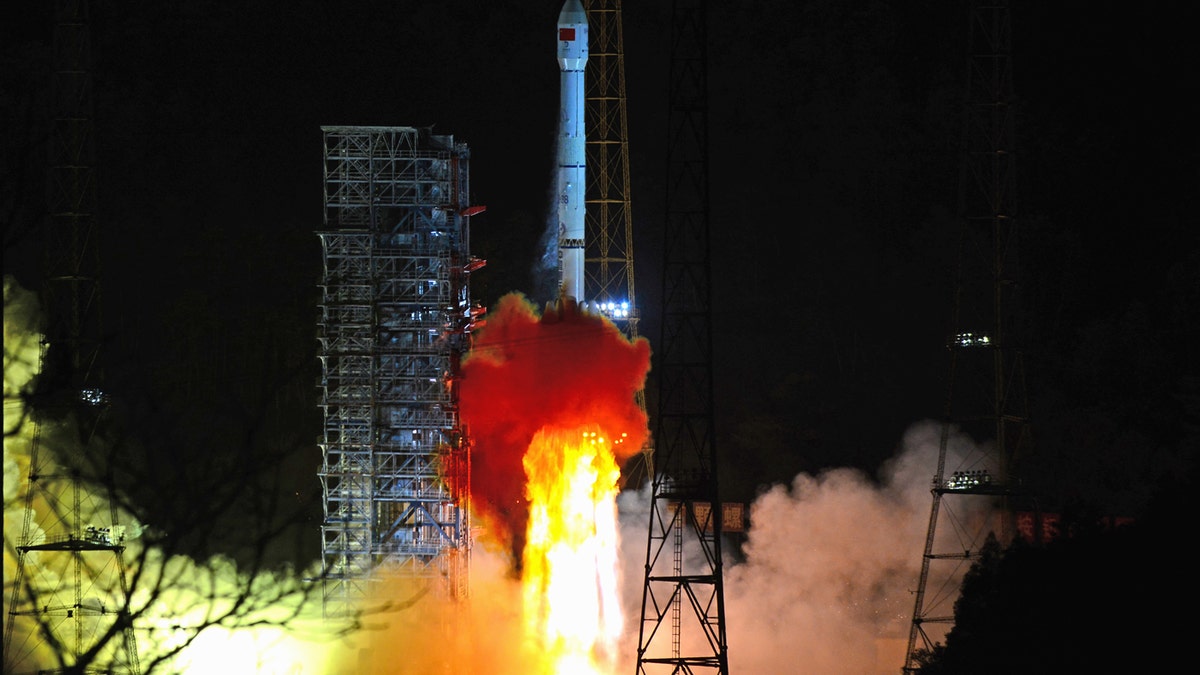
XICHANG, CHINA - DECEMBER 08: A Long March-3B rocket carrying the Chang'e-4 lunar probe including a lander and a rover blasts off from the Xichang Satellite Launch Center on December 8, 2018 in Xichang, Sichuan Province of China. (Photo by VCG/VCG via Getty Images) (Getty Images)
China is poised to realize an ambitious mission to the far side of the moon, the most immediate of many planned milestones in its effort to challenge America’s half-century-long supremacy in space.
In a first for any country, the Chang’e-4 probe is set to touch down on the “dark side” of the moon on or around Jan. 3, according to state media, and dispatch a rover in a vast crater to explore the moon’s interior. While impressive in itself, the mission is a step toward bolder objectives: China plans to operate a manned lunar base by 2030 and lead the world into a new age of space exploration.
For its part, the U.S. is reviving its manned space program after letting it languish in favor of unmanned exploration. A space-policy directive signed in December 2017 by President Trump outlined plans for manned missions to the moon and Mars and started preparations for a new space force to counter the Chinese military’s development of space weapons. These moves came after experts testified at a House Subcommittee on Space hearing in 2016 entitled “Are we losing the space race to China?” that the U.S. risked being eclipsed in the field. The National Aeronautics and Space Administration’s budget, set at $21.5 billion in 2019, is still nearly double that of its Chinese counterpart.
Already rivals on Earth, the U.S. and China are now the main contenders in a race to determine “who will be in a position to obtain the vast resources in space, secure the routes of trade and write the rules of space commerce,” said Namrata Goswami, an expert on China’s space program at Auburn University Futures Lab in Alabama.
NASA PIONEER NANCY GRACE ROMAN, THE 'MOTHER' OF HUBBLE, DEAD AT 93
China, she added, “is best placed to win,” thanks to a methodical program that has mapped out clearly defined objectives decades into the future.
A late entrant to the space race, China conducted its first manned space flight in 2003, 42 years after the Soviet Union and the U.S. first achieved the feat.
Since then, Chinese leaders have portrayed the conquest of space as an essential marker in the nation’s rise and backed that ambition with ready financing. China National Space Administration is the world’s best-funded space agency after NASA, and its development of military capabilities such as antisatellite weapons and its busy schedule of missions have jolted the U.S.
SENDING ASTRONAUTS TO MARS WOULD BE 'STUPID,' SAYS APOLLO 8 PILOT
This “is a competition with high strategic stakes,” said Dean Cheng, an expert on China’s space capabilities at the Washington-based Heritage Foundation.
While space matters again to American policymakers, the U.S. effort has lost its focus, having been underfunded since the Reagan era, according to Mr. Cheng. The U.S. has had to rely on other countries to send American astronauts into space since the end of the Space Shuttle program in 2011. Timetables to put astronauts on the moon by 2023 and on Mars by 2033 look difficult to achieve, some analysts said, and could easily fall victim to shifting political priorities.
To read more of this story, which originally appeared in The Wall Street Journal, click here.
